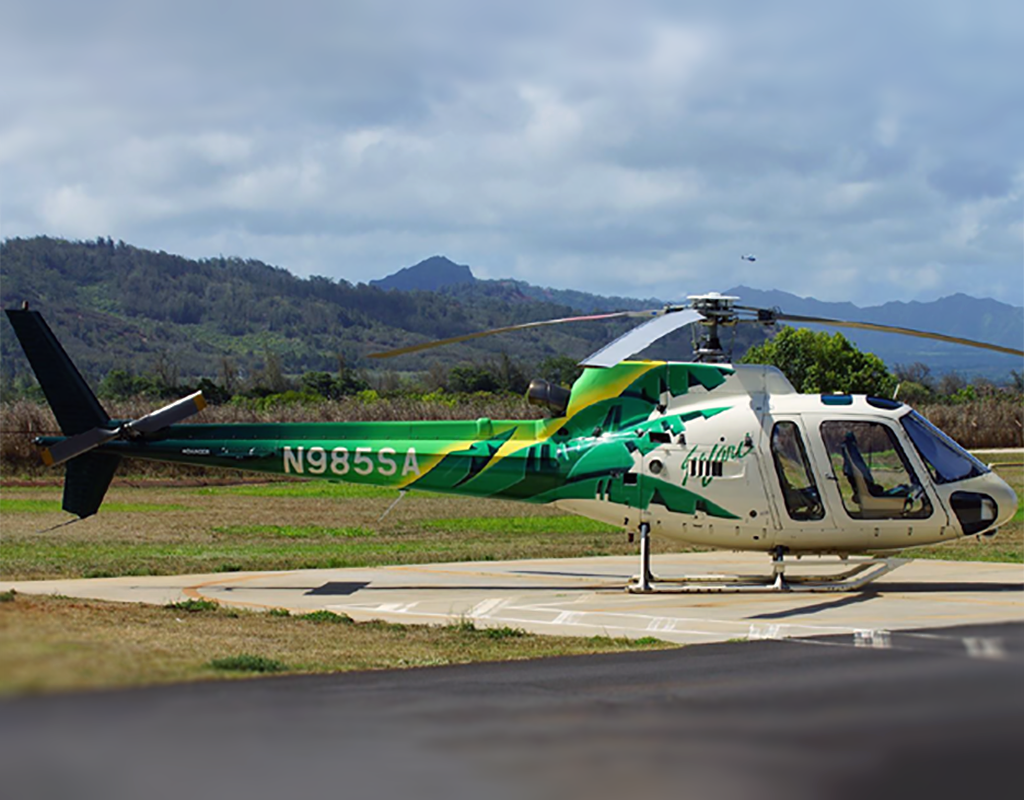
Decisions made by the Federal Aviation Administration not to implement National Transportation Safety Board safety recommendations contributed to the cause of a fatal air tour helicopter crash, the NTSB said in a report approved in a public meeting Tuesday.
“When the NTSB issues safety recommendations, they are data-driven, supported by factual evidence developed from investigations, and are carefully crafted to prevent accidents,” said NTSB Chair Jennifer Homendy. “The NTSB previously made 11 recommendations to the FAA to prevent accidents like this one, but our recommendations only work when they are implemented. It’s time for the FAA to act.”
The seven-seat Airbus AS350 B2 helicopter operated by Safari Aviation as a commercial air tour crashed in deteriorating weather in a remote area of wooded terrain near Kekaha, Hawaii, on Dec. 26, 2019. The pilot and all six passengers died in the accident and the helicopter was destroyed.
Investigators found that the highly experienced, 69-year-old pilot, who was also Safari’s chief pilot and check airman, flew into a mountainous region shrouded in low clouds and fog and wasn’t able to exit the area of limited visibility before he either lost control of the helicopter or flew into rising terrain he wasn’t able to see.
Shortly before the accident flight departed on a planned 50-minute tour of the island of Kauai, an atypical weather pattern of low clouds and rain began to move onshore from the northwest into areas along the tour route. The NTSB identified three other air tour pilots that saw the weather and diverted their tours to avoid the low visibility conditions.
Investigators said the pilot’s decision to continue flight into deteriorating visibility was likely influenced by a lack of up-to-the-minute weather information, an unusual weather pattern, and “may have been influenced by the possibility that he inadequately assed the weather conditions in flight or was overconfident in his abilities.”
The NTSB said that a safety management system – an organization-wide program to manage risks and assure the effectiveness of safety controls – would have mitigated many of the safety issues identified in this accident. The NTSB initially recommended the FAA require air taxi and air tour operators to have safety management systems in 2016. Since the FAA refused to take such action, the board reiterated the recommendation for the sixth time.
Investigators said the limitations of aviation infrastructure in some areas of Hawaii, including sparse weather observations and limitations in radio communications and flight tracking due to terrain interference, lead air tour pilots to rely heavily on their own assessment of enroute weather conditions.
As a result of previous fatal aviation accidents involving limited weather information and inflight weather assessments, the NTSB in 2007 recommended the FAA develop and require specialized inflight weather training for air tour operators in Hawaii. Investigators said the FAA’s failure to implement that recommendation deprived the pilot of training that could have given him the tools to better recognize and avoid hazardous weather conditions; the NTSB reiterated that recommendation.
The NTSB also said that because of the lack of information on the precise weather conditions the pilot encountered and his actions in response to them, the accident demonstrated the need for onboard recorders. The NTSB reiterated this recommendation, which it first made in 2013, saying that images, audio and flight data “would permit more definitive evaluation of the causes of fatal air tour accidents and identification of more effective measures to prevent them.”
The NTSB made eight new safety recommendations to the FAA and reiterated 11 more. A single recommendation each was made to the Vertical Aviation Safety Team and the Tour Operators Program of Safety.
The executive summary, probable cause, findings, and safety recommendations are in the report abstract available on the investigation web page.
The following safety issues identified in this investigation are on the NTSB’s Most Wanted List of Safety Improvements:
- Require and Verify the Effectiveness of Safety Management Systems in all Revenue Passenger-Carrying Aviation Operations
- Install Crash Resistant Recorders and Establish Flight Data Monitoring Programs
The final report will be published on the NTSB website in several weeks.
This press release was prepared and distributed by the National Transportation Safety Board.

